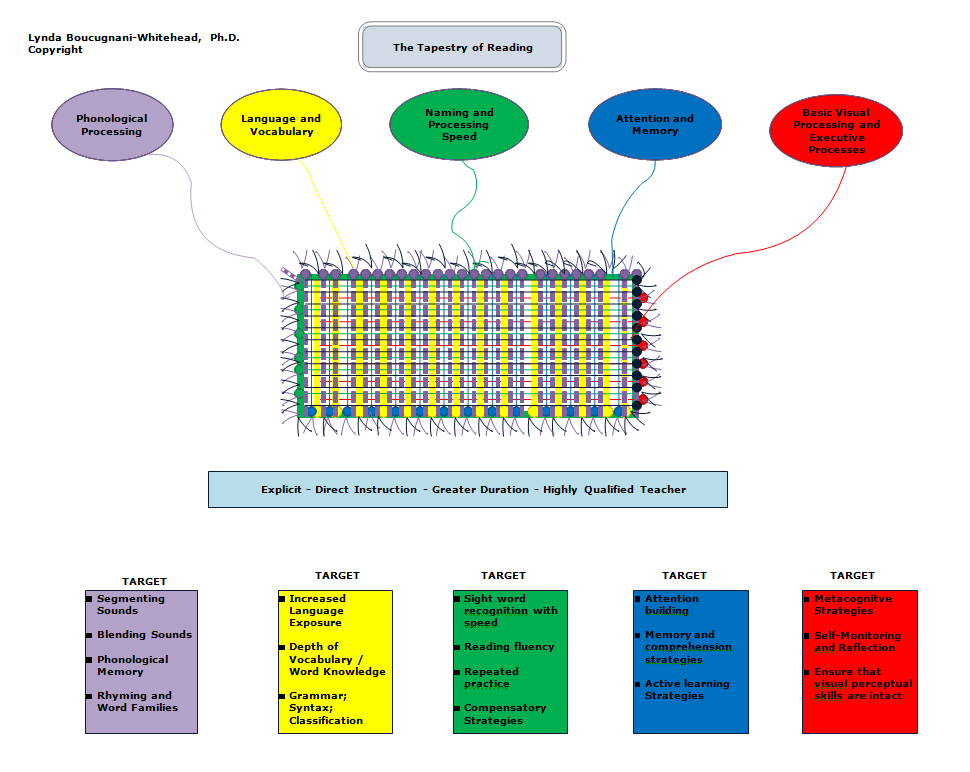
Every child is an individual and every child with dyslexia is an individual bringing a combination of notable talents and strengths to the table along with specific processing breakdowns in the overall reading network. For example, many students with dyslexia have very strong visual-spatial abilities, creative thinking and reasoning skills and think in a way that leads to invention and innovation. Many of our most revered artists, thinkers, inventors, financial builders and architects, to name a few professions, have had dyslexia and have used their talents and strengths to better our world. However, most had to suffer through periods of school time where they felt different, sometimes felt like a failure and had their talents under appreciated.
All the research on dyslexia tells us that we can and should identify students at risk for reading failure (dyslexia) in kindergarten and first grade. All the research also reports that early intervention needs to be targeted to specific areas of weakness and done directly and explicitly. This direct intervention needs to be of sufficient duration, reflect high quality instruction, and be provided by a highly qualified and trained teacher.
The two best predictors of whether a child will have reading problems are difficulty with phonological awareness and naming speed/automaticity problems. Children who have problems with phonological awareness will have difficulty initially being able to decode words. Children with only naming speed/automaticity problems may learn to decode words adequately but will be very slow in the process. The slowness will contribute to later reading comprehension problems for these children. Children who have both deficits are most at risk for dyslexia of a significant degree. If students add a language/vocabulary problem to the mixture, they will have even greater difficulty and experience problems with both decoding and reading comprehension, often to an even greater degree.
Other strong predictors of reading efficiency in the young child include:
- Facility with naming letters
- Facility with letter-sound correspondence
- Rhyming ability
With our trip through the brain, it is easy to see that dyslexia has many forms and the intervention appropriate for a particular child depends on what that child brings to the table. Some children have only subtle deficits which may involve fluency initially and comprehension later on and some children have multiple areas of deficit that require very extensive and intensive remediation. Most dyslexic children (English speakers) begin with decoding problems and real trouble learning the rules of grapheme-phoneme correspondence which shows up as problems in reading, spelling and writing.
It is also important to realize that all children are not ready to read at the same time although the way schools are structured doesn’t take this into account. For example, girls tend to have more facility with language and vocabulary in the early years than boys. In addition, girls are faster than boys until around the age of 8 on many timed naming tasks. If the child had rich exposure to language, vocabulary and oral expression before entering school, this child is much better able to make connections with text. But if they did not, they are at great disadvantage when faced with the task of learning to read and comprehend. The most important factor is early diagnosis and intervention. Dyslexia can be diagnosed at age 6 and younger students can be screened for early problems with phonological processing and language development.
Research Findings on Dyslexia:
- Some researchers have found considerable differences in the speed of processing visual information in dyslexia. Think of an image of a star followed quickly by another image of a star. In the brain of many individuals with dyslexia, two rapidly presented visual “flickers” appear fused into one stimulus, because the person cannot process this visual information quickly enough. Some individuals with dyslexia have the same timing mechanism problem with auditory stimuli.
- Researchers found that the left angular gyrus region that good novice readers draw upon appears functionally disconnected from the other left hemisphere language regions during reading and the processing of phonological information in dyslexics.
- Researchers have found a disconnection between frontal and posterior language regions, based on under activity in an expansive connecting area called the “insula” – an area critical for automatic processing
- Researchers using MEG (magnetoencephalography) found that children with dyslexia move from visual regions in the left and right occipital lobes to the right angular gyrus region and then to their frontal areas – this is an entirely different reading circuitry than is usually seen in typically developing readers.
- Other researchers have found that people with dyslexia use more right-hemisphere regions, including the occipital-temporal regions and have underactivated left posterior regions typically used by normally developing readers.

